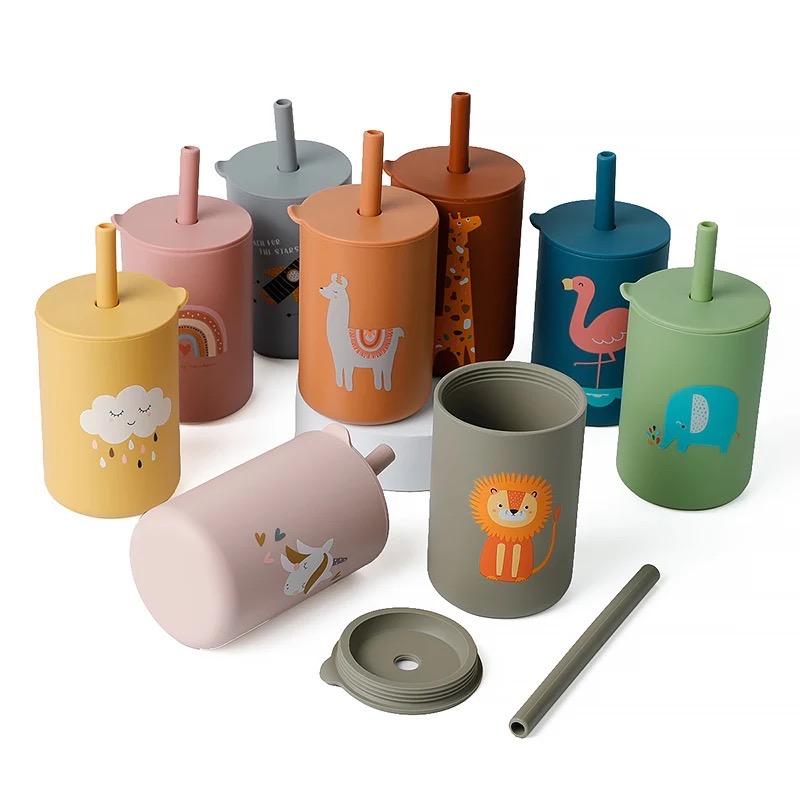With the stage of weaning, either classic or BLW, in addition to using cutlery, plates and bowls , your baby will also need to learn to use a glass or cup to drink water on his own. It may seem difficult, but believe me, it just seems. With the right plan and 1-2 right products, everything will be very simple. In this article, you will find all this information.
What is the plan and what are the products?
Before we get into the details (because we will), here’s the plan for getting your baby familiar with the cup or glass.
With the start of weaning(around the age of 6-9 months), in parallel with breastfeeding, you will begin to introduce the baby to alternative containers from which to drink water.
Very important! Breastfeeding should continue as long as you and your baby feel it is necessary. Along with weaning, you will introduce alternative sources of food and water, but you will only give up breastfeeding when you feel it is no longer necessary and after consulting your child’s pediatrician.
The sippy cup will replace the bottle and provide a breast-like alternative. We recommend glass with a soft beak, which does not break and which can be quickly transformed into normal glass. When the straw is no longer needed, you’ll be left with an excellent glass for the little ones.
We recommend a versatile training cup with a lid and straw, with which your baby can practice the movements of grasping, bringing to mouth, and sipping from the straw. The straw and lid will help at first, then they will disappear and only the mug will remain.
With these simple products, you will cover all your child’s needs for glasses, cups, and mugs.
Your baby may accept the training cup from the start and not need the sippy cup at all. This scenario would be an ideal one, but don’t panic if it doesn’t happen that way. Most babies will use the sippy cup first.
When should the training cup and cup be introduced?
Once weaning begins, along with it, tableware you must also provide the practice cup and mug. Yes, even if the little one will probably prefer to drink from the sippy cup at first, the cup will certainly arouse his interest and must also be present within the reach of the baby at every meal. The interest in the cup could be seen at first in the desire to grab it, taste it, even throw it or slam it on the ground, but this is normal.
When does weaning begin? Around 6-9 months of age. From this age, babies become curious to grab and play with everything around them. Another (perhaps more useful) milestone for starting weaning: Weaning begins when the baby shows that it can sit upright in the seat without support of any kind. This means he can support his head well and move his hands freely. This is the time to make a cheerful appearance for weaning, so automatically the training mug.
When will the first results be seen?
If the baby starts training with the cup from 6-9 months and has them at hand at every meal, then in a short time he will get to use the cup. Of course, like any new activity to be learned, the more practice, the better the results. In addition, the example of parents or older children helps them understand how to proceed.
Why the Naaroo training mug?
Here’s why a Naaroo cup with a lid and straw is perfect for your baby:
– A 4-in-1 product. You can use only a cup, cup + straw, cup + lid, and cup + lid + straw. If you’re going to buy one mug, why not have one mug that does it all? Drinking with a straw is an activity that the child must acquire anyway, and the lid will be very useful in preventing dirt. The Naaroo mug offers you all the options, without having to buy another product.
– Easy to grab and handle. The cup is light and has large handles (or without for toddlers), easy for babies’ hands to grasp.
– Right size. 160-180 ml is enough for a small child’s cup. The baby must be able to drink without being ”flooded” with water when he brings the cup to his mouth. Small children do not drink much water, and when the inevitable accidents happen there is no point in collecting a lot of liquid from the floor.
– Resistant to falls, hits, throws. The cup is made of food-grade silicone. It doesn’t break, it doesn’t crack.
– Practice. It can be used in the microwave oven, in the refrigerator, or in the freezer.
– No plastic.
We hope the information was helpful. You can follow us on Instagram or Facebook .









0 Comments for “How do we give babies water and other liquids?”